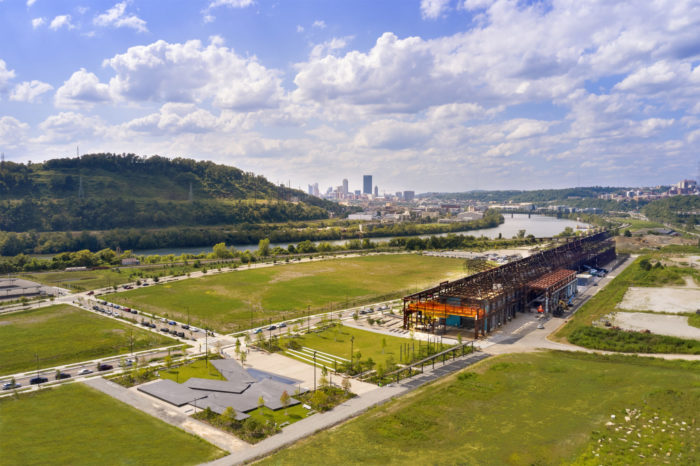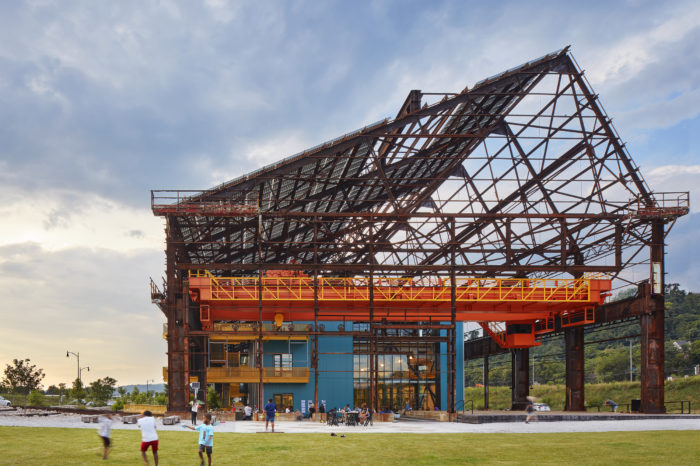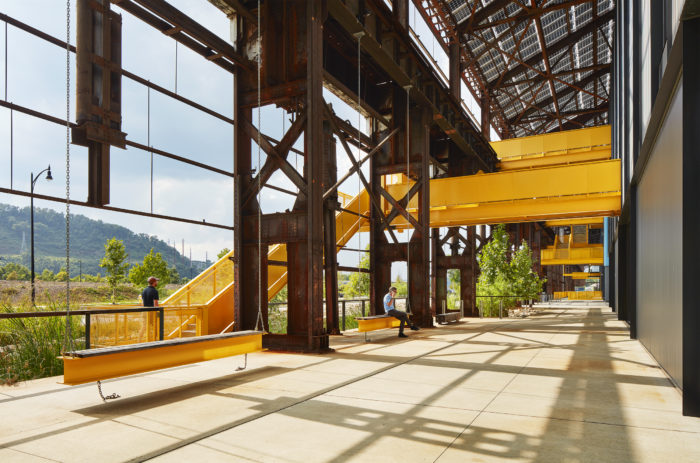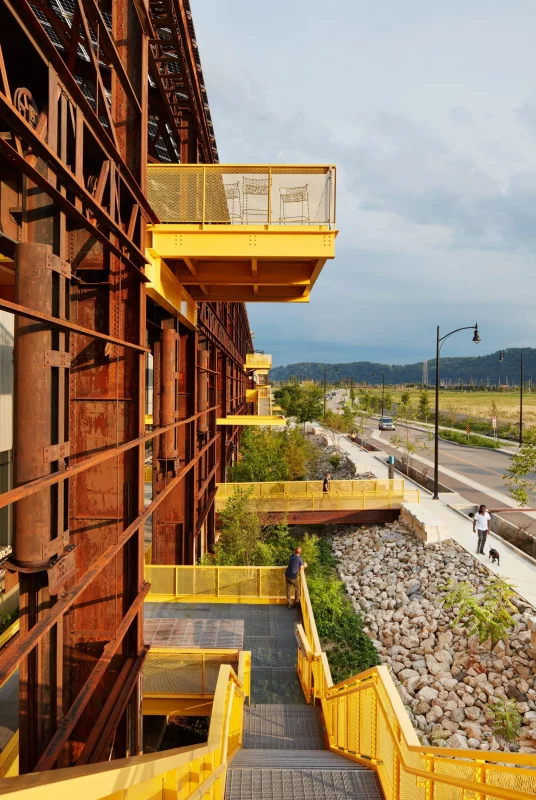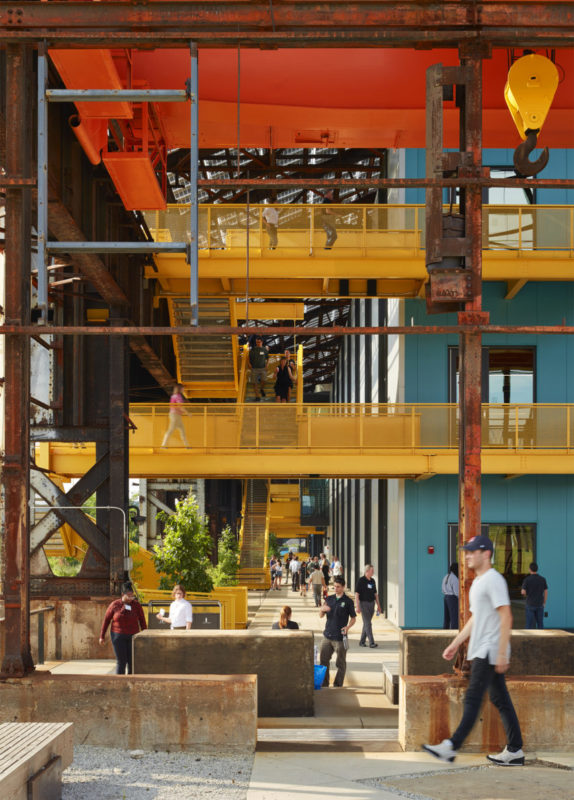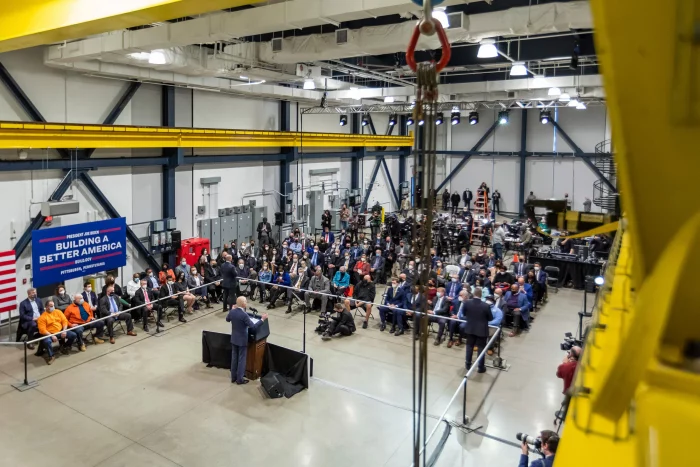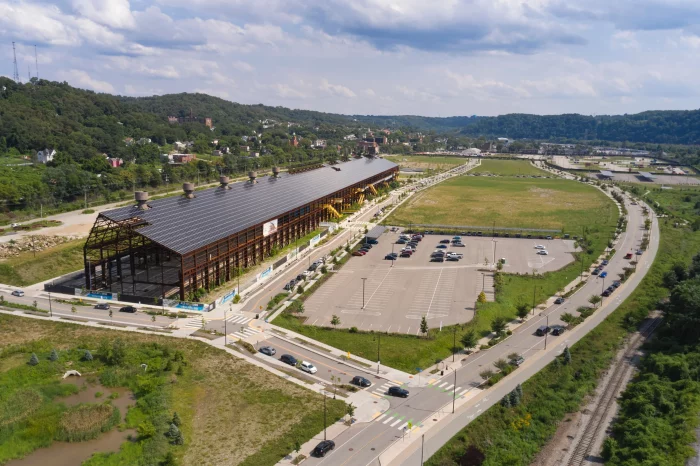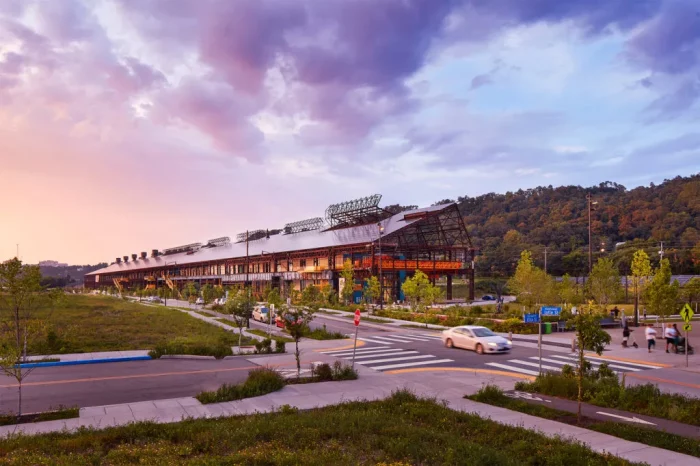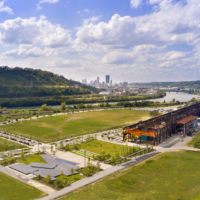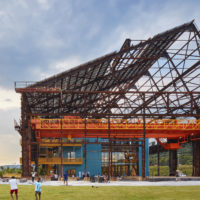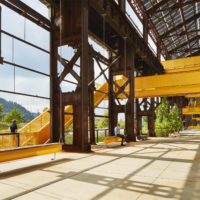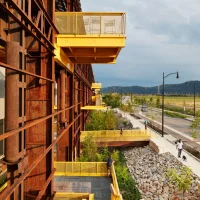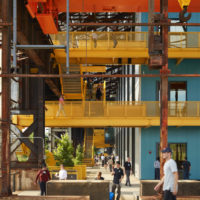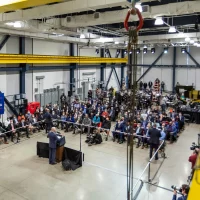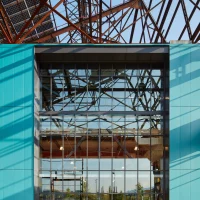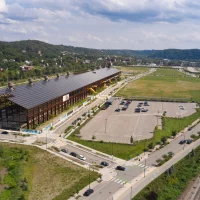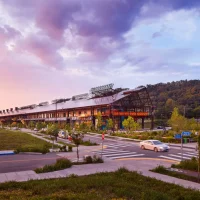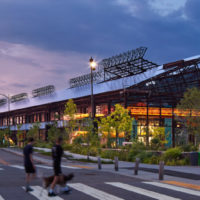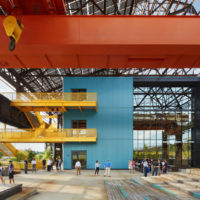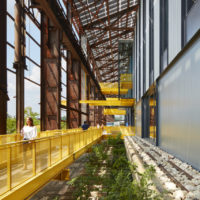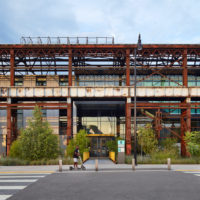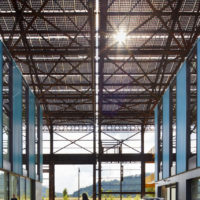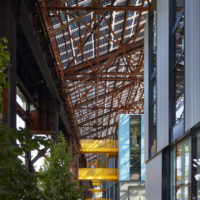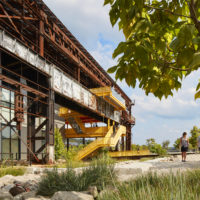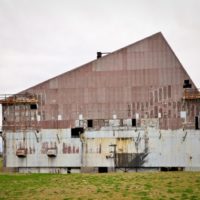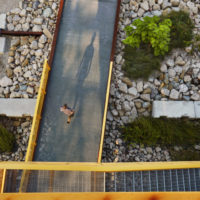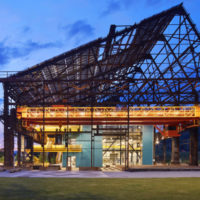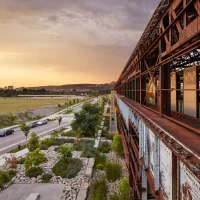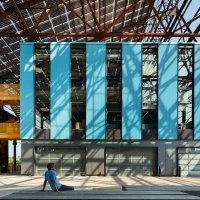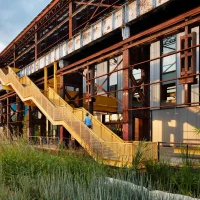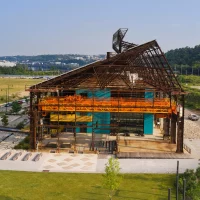The RIDC Mill 19 technology campus, designed by Minneapolis-based firm MSR Design, occupies the ruins of a 70-year-old dysfunctional steel factory in Pennsylvania. It features three brightly colored buildings and a giant solar panel system on the summit. Pittsburgh’s Hazelwood neighborhood is home to the revitalization initiative, situated on an abandoned brownfield site just a few miles from the city’s central business district. The building has a view of the Monongahela River.
“RIDC Mill 19 is an active symbol of Pittsburgh’s transition from an industrial steel-making past to a future of environmentally responsible, technologically advanced production,” architects at MSR Design in Minneapolis made that claim.
RIDC Mill 19: Pittsburgh’s Shift from Steel to Robotics City
MSR Design tucked three additional structures inside the ancient mill’s hulking exterior, increasing the building’s overall floor area to 263,200 square feet (24,452 square meters). The site was built with technologically advanced and industrial individuals in mind.
In 1953, construction began on Mill 19, a steel rolling plant. With its continued operation until 1997, it is the last steel factory in Pittsburgh. It once was a hub for the United States now-declining steel production.
The architecture firm wanted to keep the ancient mill’s 1,360-foot-long (415-meter) and 100-foot-high (30-meter) structure to honor the site’s historical heritage. After a thorough power washing, the building was checked for any remaining contamination.
Clad in various metals, these three buildings stand out from the mill’s steel framework. An external passageway along the southwest level is between the new structures and the ancient shell. Skybridges float above the connecting area and lead to bright yellow stairwells.
“The design team used an unusual strategy to retrofitting by removing the original mill’s rusting metal sheeting skin, revealing its spectacular steel skeleton, and then constructing a series of speculative, sophisticated workplace, lab, and production units within the ruined foundations,” the studio explained.
The design team emphasized transparency and flexibility in the interiors. Huge panes of glass let in plenty of daylight. The interior design of RIDC Mill 19 prioritizes adaptability, openness, and natural light to fulfill the requirements of the building’s cutting-edge occupiers.
The campus’s many gardens, patios, and public spaces serve as venues for everything from quiet reflection to lively social gatherings. TEN x TEN, based in Minneapolis, was the landscape architect for this endeavor. The campus also features a network of rain gardens, pathways, and tanks for collecting and purifying stormwater; these and other eco-friendly additions helped the project earn a 2023 AIA Committee on the Environment (COTE) Award. The two-megawatt solar power array stands out as one of the most significant installations in the United States. It produces enough electricity to supply most of the RIDC Mill 19 demands.
In addition, the location uses recycled materials from the nearby steel factory. One such example is the original concrete slab on the site, which had been sliced up into bits and embedded in the environment. Hazelwood Green, a 170-acre (69-hectare) rehabilitation project, is being built on the riverside property formerly owned by Jones & Laughlin Steel Corporation. RIDC Mill 19 is the first phase of this ongoing project.
The design team concluded, “RIDC Mill 19 acts as a boost and tone-setter for the complete redevelopment of all 170 acres into an environmentally friendly, mixed-use, high-technology development area that re-establishes connections between the river and nearby communities.”
- © Corey Gaffer
- © Corey Gaffer
- © Corey Gaffer
- © Corey Gaffer
- © Corey Gaffer
- © Corey Gaffer
- © Corey Gaffer
- © Corey Gaffer
- © Corey Gaffer
- © Corey Gaffer
- © Corey Gaffer
- © Corey Gaffer
- © Corey Gaffer
- © Corey Gaffer
- © Corey Gaffer
- © Corey Gaffer
- © Corey Gaffer
- © Corey Gaffer
- © Corey Gaffer
- © Corey Gaffer
- © Corey Gaffer
- © Corey Gaffer
- © Corey Gaffer


